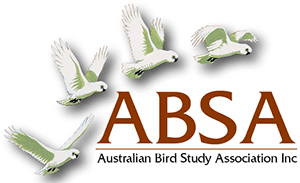OBSERVATIONS ON A GREAT EGRET Ardea alba AND NANKEEN NIGHT HERON Nycticorax caledonicus COLONY AT THE PERTH ZOO, WESTERN AUSTRALIA
| Posted: |
03/06/2021 |
| Author(s): |
Harry F. Recher, Robyn L. Phillimore |
A colony of Great Egrets
Ardea alba and Nankeen Night Herons Nycticorax caledonicus has existed at the
Perth Zoo, Western Australia for over 25 years. The colony of egrets is one of very few in the region and hence
is significant for the conservation and management of Great Egrets in Western Australia. From 1996 to 1998,
surveys were conducted to determine the number of breeding pairs, clutch size, breeding success, and nest
site selection of birds in the colony. Most observations were ground based, but a 30-metre cherry picker was
used to inspect nests and determine clutch size. One hundred and thirty night heron and 49 egret nests were
found in 1996; 92 night heron and 41 egret nests in 1997; and, 153 night heron and 36 egret nests in 1998.
Nesting commenced in September, with peak numbers in early November. Both species nested in tall trees well
above zoo visitors and animals. Egrets nested only in pines, whereas night herons nested mainly in figs. Great
Egrets had an average clutch size of 2.6-2.7 by early November compared with a clutch of 1.6-1.8 for Nankeen
Night Herons. It was estimated that 95 per cent of egret eggs and 89 per cent of night heron eggs laid by early
November in 1997 hatched and that 53 per cent of egret eggs (1.4 per nest) and 65 per cent of night heron
eggs (1.2 per nest) survived to fledging. Incomplete data precluded estimates of breeding success for 1996 and
1998. The colony appears viable, but its long-term survival depends on the on-going provision of nest trees
within the zoo and the conservation of foraging habitat within the Perth metropolitan area.
>> Download Abstract |
File Size: 116KB
>> Download Complete PDF | File Size: 694KB
